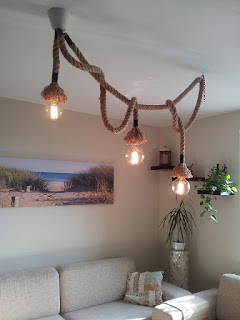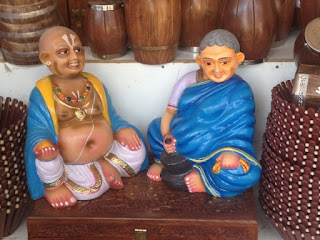Adapting a décor which is constructed around traditional thematic elements is a great way to highlight rich ancient content in a visual format and to create an interesting and unusual décor
This month as the festivities continue, every day of Dussehra is celebrated with great joy and fervour. Rich in symbolism and with a specific cultural and religious connotation each day is associated with traditional rituals and is celebrated accordingly. The ninth and the tenth days of Dussehra are celebrated as Ayudha Pooja and Vijayadashmi. During the festivals, traditionally weapons were worshipped; however these days tools related to respective professions such as electronic gadgets are also worshipped. Goddess Saraswati as the symbol of knowledge, music and arts is offered prayers to invoke her blessings. The importance of celebrating these festivals in a traditional manner helps in emphasizing their significance and also in inculcating cultural values in the younger generation.
During this occasion, traditional arts and crafts can be used in décor to create an ethnic ambience that enhances the festive spirit, as well. Mysore and Tanjore paintings and folk and tribal art with its symbolism associated with festivities are some of the artworks that enrich the environment. Look for traditional paintings that depict scenes from the epics and narrate mythological stories. Oleographs and prints of paintings by Raja Ravi Varma and his contemporaries depicting vignettes from mythological texts add a great interest to the décor in terms of rarity, beauty and traditional significance.
Adapting the décor by accessorising around traditional thematic elements is a great way to highlight rich ancient content in a visual format and to create interesting and unusual décors. Art based on mythology and legends adds to the visual narrative and its rendition can be either traditional or contemporary.
For instance, many contemporary artists transcribe text from religious books and scriptures on their paintings and also sculptures and installations which can add an interesting dimension to the festive décor. Incidentally, a few artists also paint musicians on their canvas and create sculptures around musical themes. These can form the perfect accessories in the décor.
The significance of music, musical instruments and other symbols of fine arts, learning and knowledge is primary during Ayudha Pooja and Vijayadashmi. A creative display of musical instruments, especially vintage instruments which exhibit a fine craftsmanship make for an interesting addition in the décor. Antique wood and brass instruments are not only rare, but also exceptionally beautiful and must be displayed with care. These can form the focal point in the décor and can be exhibited on raised platforms or pedestals. Use appropriate and creative lighting fixtures to highlight the aesthetic elements and craftsmanship of rare artefacts.
Similarly, unusual and antique statuettes, figurines and silver and brassware emphasise ethnic nuances and contribute to a traditional look and can be used as part of the décor or as functional objects.
The writer is an art consultant and curator
Published in Times Property, Bangalore
If you enjoyed reading this article, do share it using the social media widgets at the top and subscribe to receive regular updates from Art Scene India
Related Posts,
This month as the festivities continue, every day of Dussehra is celebrated with great joy and fervour. Rich in symbolism and with a specific cultural and religious connotation each day is associated with traditional rituals and is celebrated accordingly. The ninth and the tenth days of Dussehra are celebrated as Ayudha Pooja and Vijayadashmi. During the festivals, traditionally weapons were worshipped; however these days tools related to respective professions such as electronic gadgets are also worshipped. Goddess Saraswati as the symbol of knowledge, music and arts is offered prayers to invoke her blessings. The importance of celebrating these festivals in a traditional manner helps in emphasizing their significance and also in inculcating cultural values in the younger generation.
 |
| Artist Shraddha Rathi, Image courtesy Rupali & Gaurav Bhatia |
Adapting the décor by accessorising around traditional thematic elements is a great way to highlight rich ancient content in a visual format and to create interesting and unusual décors. Art based on mythology and legends adds to the visual narrative and its rendition can be either traditional or contemporary.
 |
| Image courtesy pixabay |
For instance, many contemporary artists transcribe text from religious books and scriptures on their paintings and also sculptures and installations which can add an interesting dimension to the festive décor. Incidentally, a few artists also paint musicians on their canvas and create sculptures around musical themes. These can form the perfect accessories in the décor.
The significance of music, musical instruments and other symbols of fine arts, learning and knowledge is primary during Ayudha Pooja and Vijayadashmi. A creative display of musical instruments, especially vintage instruments which exhibit a fine craftsmanship make for an interesting addition in the décor. Antique wood and brass instruments are not only rare, but also exceptionally beautiful and must be displayed with care. These can form the focal point in the décor and can be exhibited on raised platforms or pedestals. Use appropriate and creative lighting fixtures to highlight the aesthetic elements and craftsmanship of rare artefacts.
Similarly, unusual and antique statuettes, figurines and silver and brassware emphasise ethnic nuances and contribute to a traditional look and can be used as part of the décor or as functional objects.
The writer is an art consultant and curator
Published in Times Property, Bangalore
If you enjoyed reading this article, do share it using the social media widgets at the top and subscribe to receive regular updates from Art Scene India
Related Posts,
- Abstract Art for Interiors
- Art on Rugs and Tapestries
- Artistic Expressions with Glass
- Miniature Paintings in Home Décor
- Painting a Wall
- Art for Festive Occasions
- Art in Interiors: Art With Paper
- Displaying Art in Home Interiors
- Hyperreal Art Makes An Impact
- Art in Interiors: Murals Bring Art to Interiors
- Chromatic Frames to Display Art
- A Tradition of Textile Art
- Art Installations to Complement Home Decor
- Festive Home Decor : A tradition of lighting the lamp
- Art In Home Decor
- Integrate Art With Architecture
- Style Statement With Art
- Antiques in Home Decor

